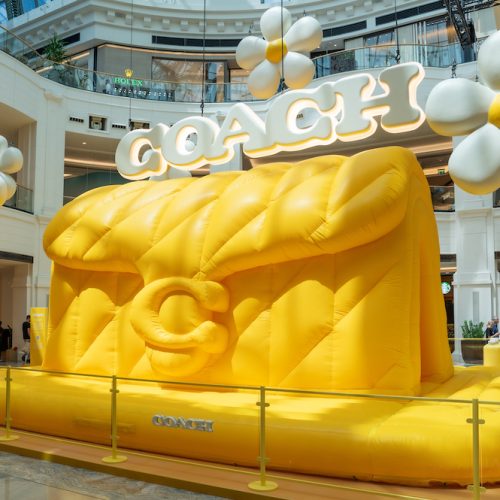Few prophecies have garnered as much attention and speculation as the prediction that the world would end in 2012. Fueled by a convergence of ancient calendars, modern interpretations, and apocalyptic fervor, the notion that humanity’s days were numbered spread like wildfire across the internet. At the heart of this phenomenon lay the ancient Mayan calendar, specifically its Long Count cycle, which supposedly ended on Dec. 21, 2012. This date, dubbed the “end of the world” by some, ignited a cascade of theories, interpretations, and doomsday scenarios across the internet. Yet, the fateful date came and went without the cataclysmic events many had predicted, and life continued without the impending threat of the world ending anytime soon. That is, until very recently, when a new end-of-times prophecy began gaining prominence on the internet— and it has to do with the current conflict between Israel and Palestine.
Earlier this week, reports emerged of a massive altar being prepared in Jerusalem, overlooking the Mount of Olives, for the sacrifice of a perfectly red heifer “without defect or blemish and that has never been under a yoke.” This ancient ritual, which dates back to the time of Moses, has captured the attention of internet users and dooms-dayer’s worldwide, as this sacrificial ritual is considered a harbinger of the end times. According to Jewish tradition, the ashes of a red heifer are necessary for the purification ritual required for the construction of a Third Temple in Jerusalem. The construction of the Third Temple is seen by some as a precursor to the messianic era.
In September 2022, Israel imported five impeccably red heifers from the state of Texas. While one heifer has since been disqualified, the remaining four now serve as potential candidates for the sacrifice. For now, they are being meticulously groomed and safeguarded for their intended role in the ritual during the ceremony that must be performed looking directly into where the ancient Second Temple (The Temple of Herod) stood, until it was destroyed by the Romans in the year 70.
Since the time of Moses, a mere nine red heifers have been offered in sacrifice— a testament to the rarity and profound significance of this event. Today, as speculation surrounds the possibility of a tenth sacrifice, all eyes turn to Israel, where preparations for this ceremonial offering are said to be well underway. What does this have to do with Palestine? The proposed location for this Third Temple is also home to the Al-Aqsa Mosque and the Dome of the Rock shrine, two of the holiest sites in Islam.
To build the temple, one, or both of them, would have to be destroyed— an act that could make the current war spread rapidly beyond the Gaza Strip and Palestine. Mustafa Abu Sway, the Imam Al-Ghazali Chair at the Al-Aqsa Mosque, told CBS News that removing Al-Aqsa or the Dome of the Rock was “unimaginable,” and warned that it would be “opening a Pandora’s box that nobody can close.” However, a fringe group of Orthodox Jews and Christians believe that the rebuilding of the Temple and the fulfillment of subsequent apocalyptic prophecies are prerequisites for the second coming.
Phil Torres, the author of The End: What Religion and Science Tell Us About the Apocalypse, delves on the impact of religious beliefs regarding the future on present-day decision-making, especially in the instance of Christian dispensationalism and Islamic eschatologies. Dispensationalism, a set of Evangelical Christian beliefs, for example, insists on unconditional and unwavering support for Israel and fosters hostility towards Palestinians and Arabs among Christians. Similarly, Islamic beliefs about the end times can clash with Christian ones, leading to tension. The problem is that these religious views can increase violence among groups now and raise the risk of a future apocalypse driven by secular factors.
Naturally, all of this information, combined with the human fascination with eschatology, has laid a fertile ground for speculation and the internet is brimming with all sorts of theories and conspiracies about the world ending soon. Memes, viral videos, and online communities are further perpetuating the prophecy, disseminating it globally and fueling a collective sense of anticipation and dread about an impending apocalypse.
It seems like the end is always nigh in the human mind. Humanity has long been fixated on the idea of “the end of the world,” a fascination that is deeply rooted in religion and psychology. In the last decade-and-a-half alone, there were several dates that were supposedly meant to usher in the impending End of Days: May 21, 2011; Dec. 21, 2012; and Sep. 23, 2017, among others. Obviously, all of these prognostications have failed to unfold. According to reports, today, about 41 percent of Americans believe that Jesus will either “definitely” or “probably” return by 2050, and comparable numbers of Muslims expect the world to end in their lifetimes. But doomsday scenarios even predate organized religion—the oldest written story, the 5,000-year-old Sumerian text The Epic of Gilgamesh— recounts how the gods decide to send a flood to destroy humanity due to their wickedness.
But why the fixation with doomsday? According to University of Minnesota neuroscientist Shmuel Lissek, who studies the fear system, some individuals may find comfort in being able to attribute doom to some larger cosmic order as this kind of mythology removes any sense of individual responsibility. “Apocalyptic beliefs make existential threats—the fear of our mortality—predictable,” Lissek said.
Indeed, studies show that when unpleasant experiences, like electric shocks, are predictable, activity in brain regions associated with anxiety and fear are reduced compared to when the shocks are unpredictable. Additionally, participants reported feeling less anxious when the shocks were predictable, even though they still found the shocks unpleasant. The phenomenon, dubbed “predictive processing,” suggests that the brain’s ability to predict and anticipate events plays a crucial role in regulating emotions and reducing anxiety, even in situations that are inherently unpleasant or painful.
Sheldon Solomon, author of The Worm at the Core: On the Role of Death in Life, also posits that humanity’s intrigue with the apocalypse may also derive from our capacity for existential dread serving as a survival tactic. “The same cognitive capacities that enabled our ancestors to be self-aware—not to mention to live in large groups, imagine and create sophisticated tools, and plan and execute elaborate hunting and foraging forays—also brought the potentially paralyzing realization of death to mind,” he wrote. “And paralysis was a recipe for extinction; so early humans, instead of succumbing to existential despair, placed themselves in the center of an extraordinary, transcendent, and eternal universe.”
The ongoing preparations for the purported red heifer sacrifice in Israel serve as just the latest in a long line of “end is nigh” proclamations—and they’re unlikely to be the last. Many will argue that instead of fixating on the esoteric symbolism of red heifers, our collective attention should probably be directed towards the pressing issues that pose imminent and tangible dangers to our planet and civilization, such as climate change, pandemics, and the risks associated with the rapid pace of technological advancement. To quote David E. Nye: “The Four Horsemen of the Apocalypse ride out in a worldwide whirlwind of revolution, conquest, war, famine, and death. What is it that makes us believe that our own end will be different? We have nuclear weapons that can wipe out a civilization in a matter of hours. We have created new pathogens that can be deployed in biological warfare. We have developed the means to manipulate the climate of the entire planet. We have become masters of our own destruction.”









